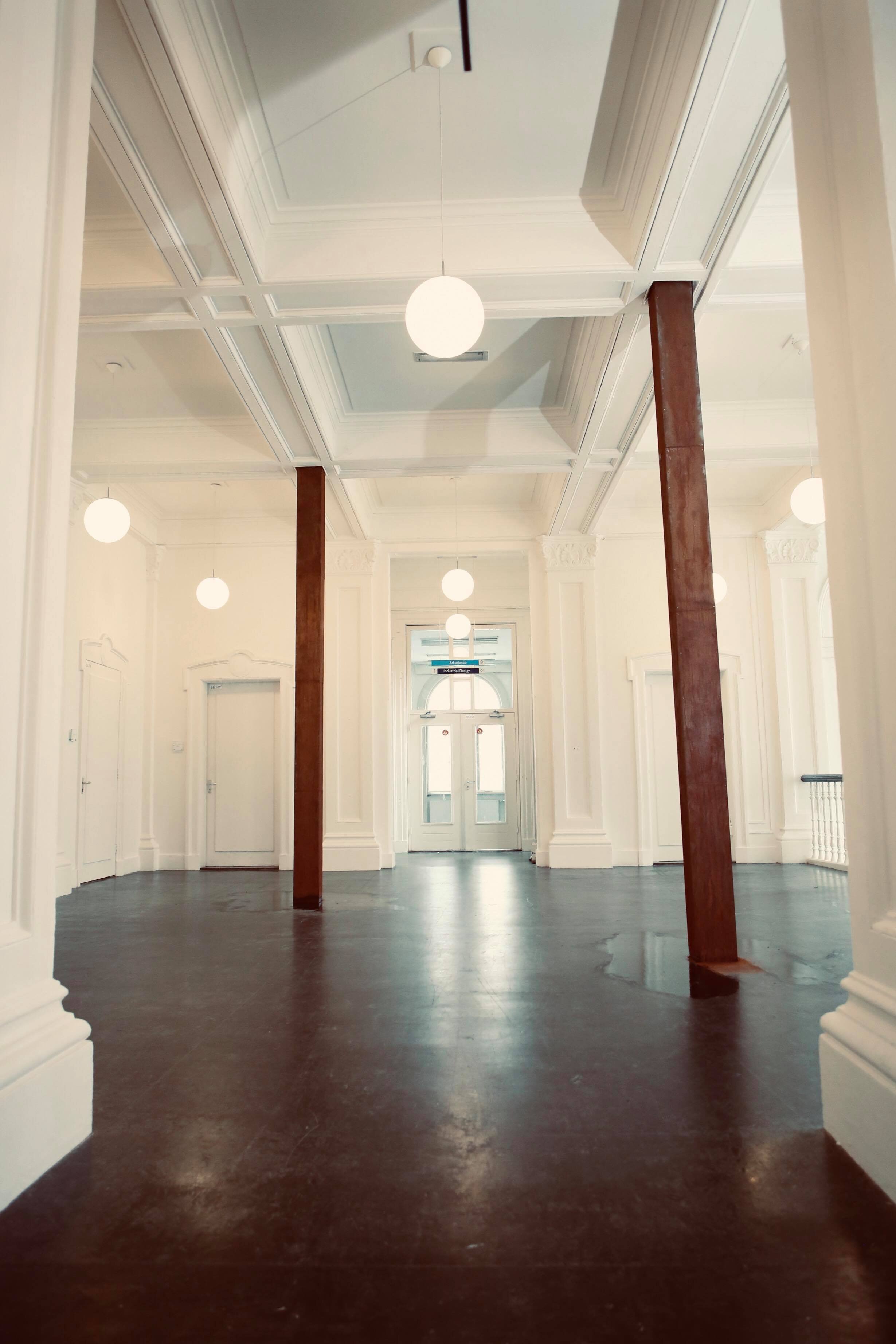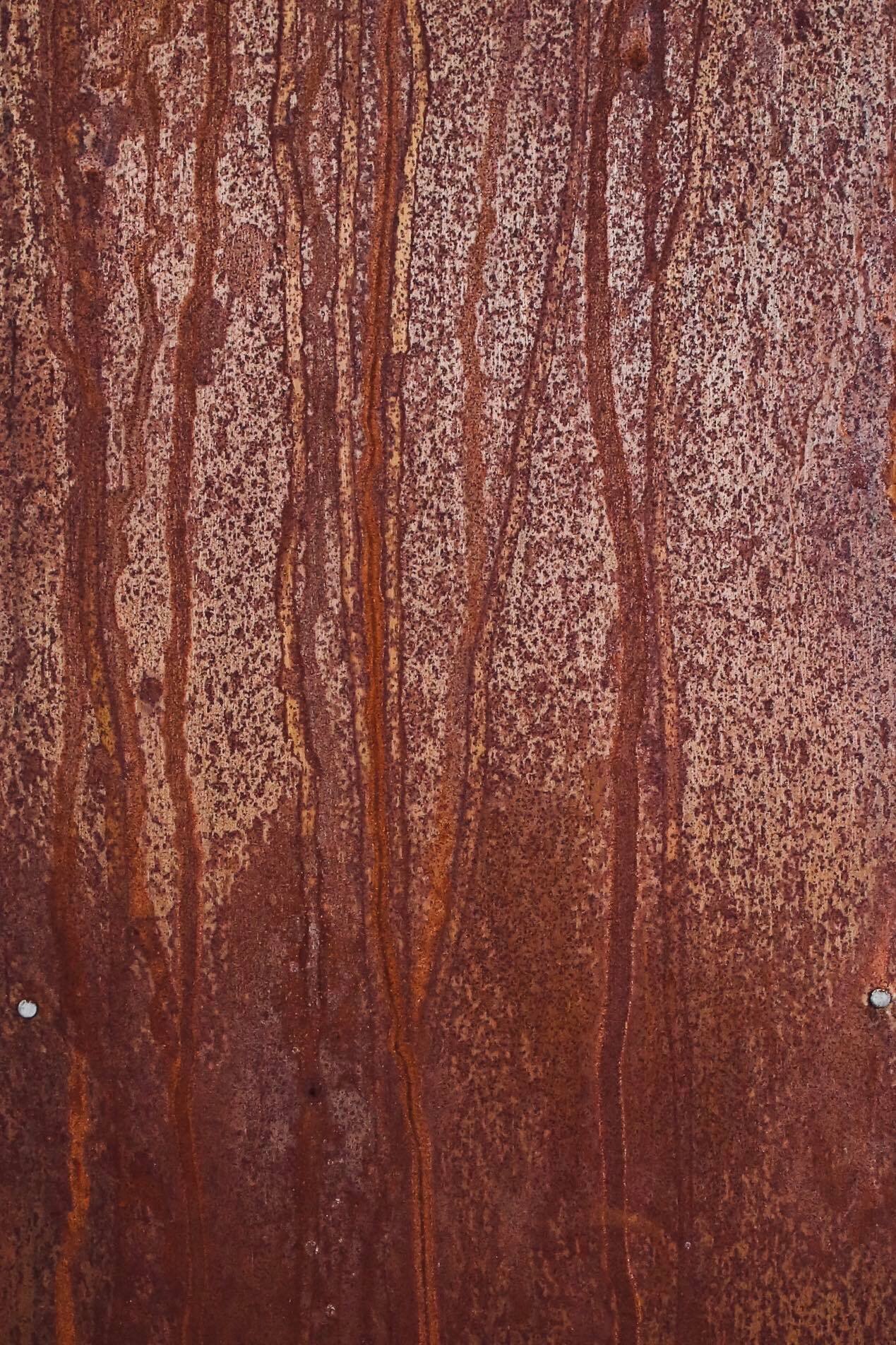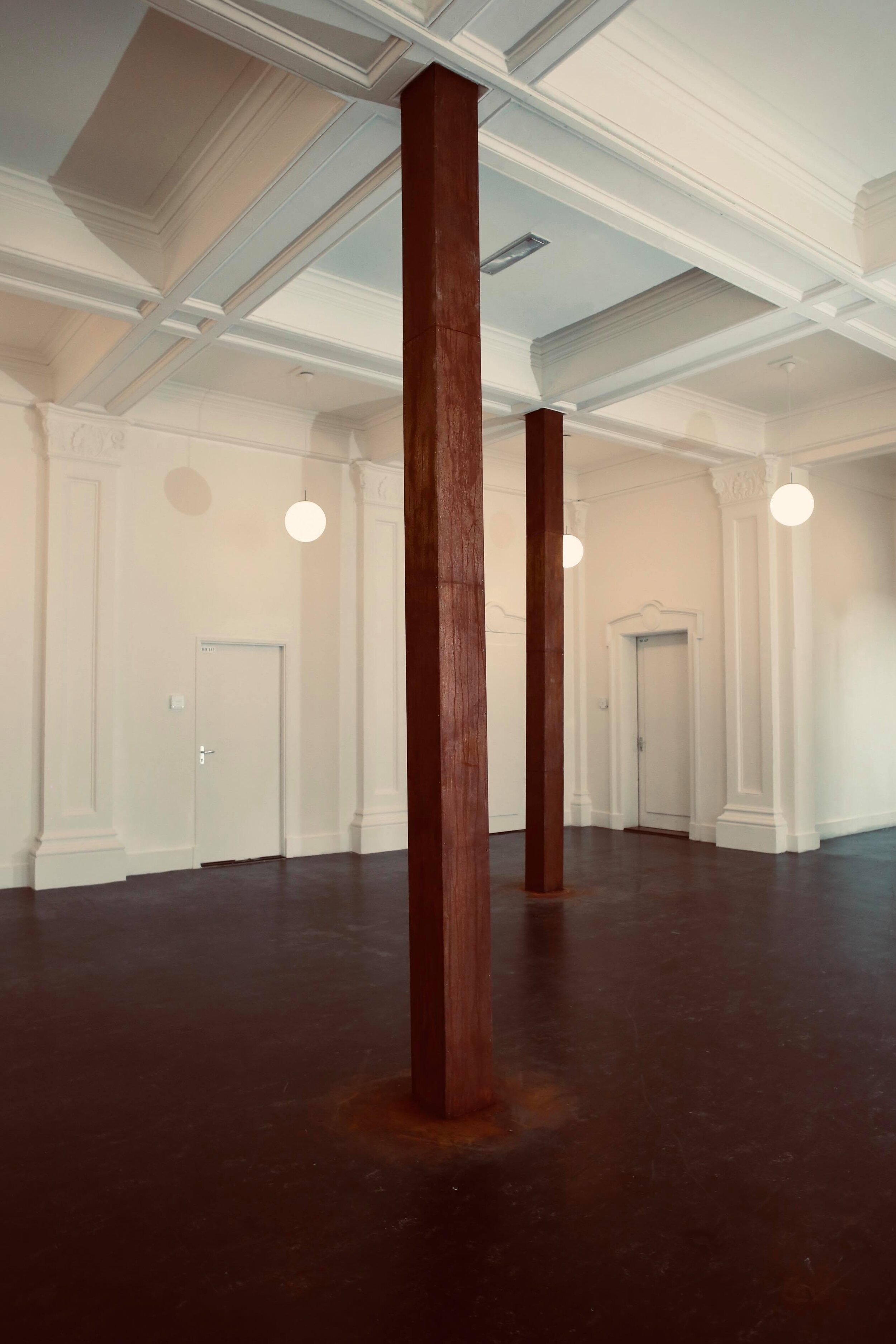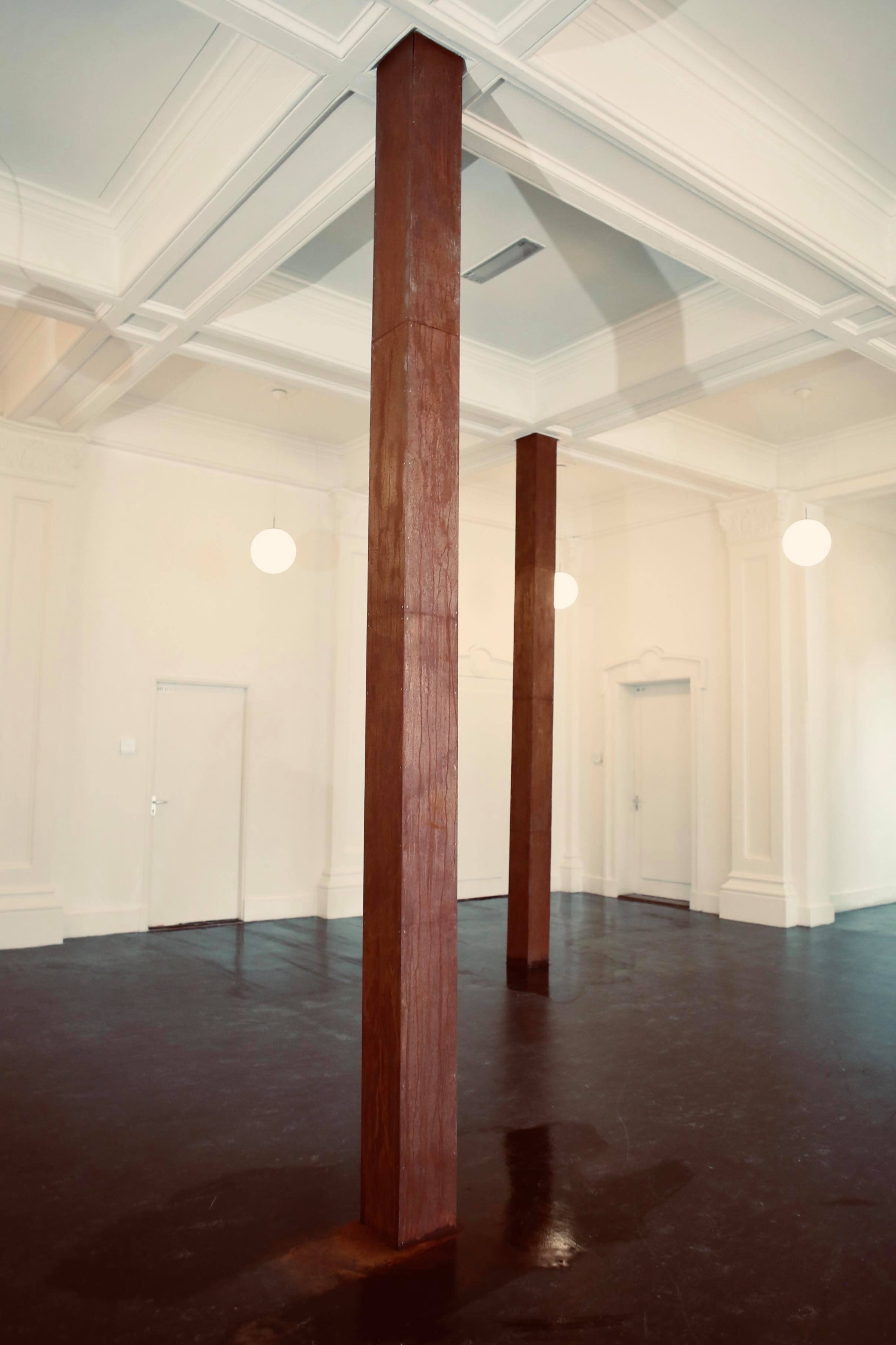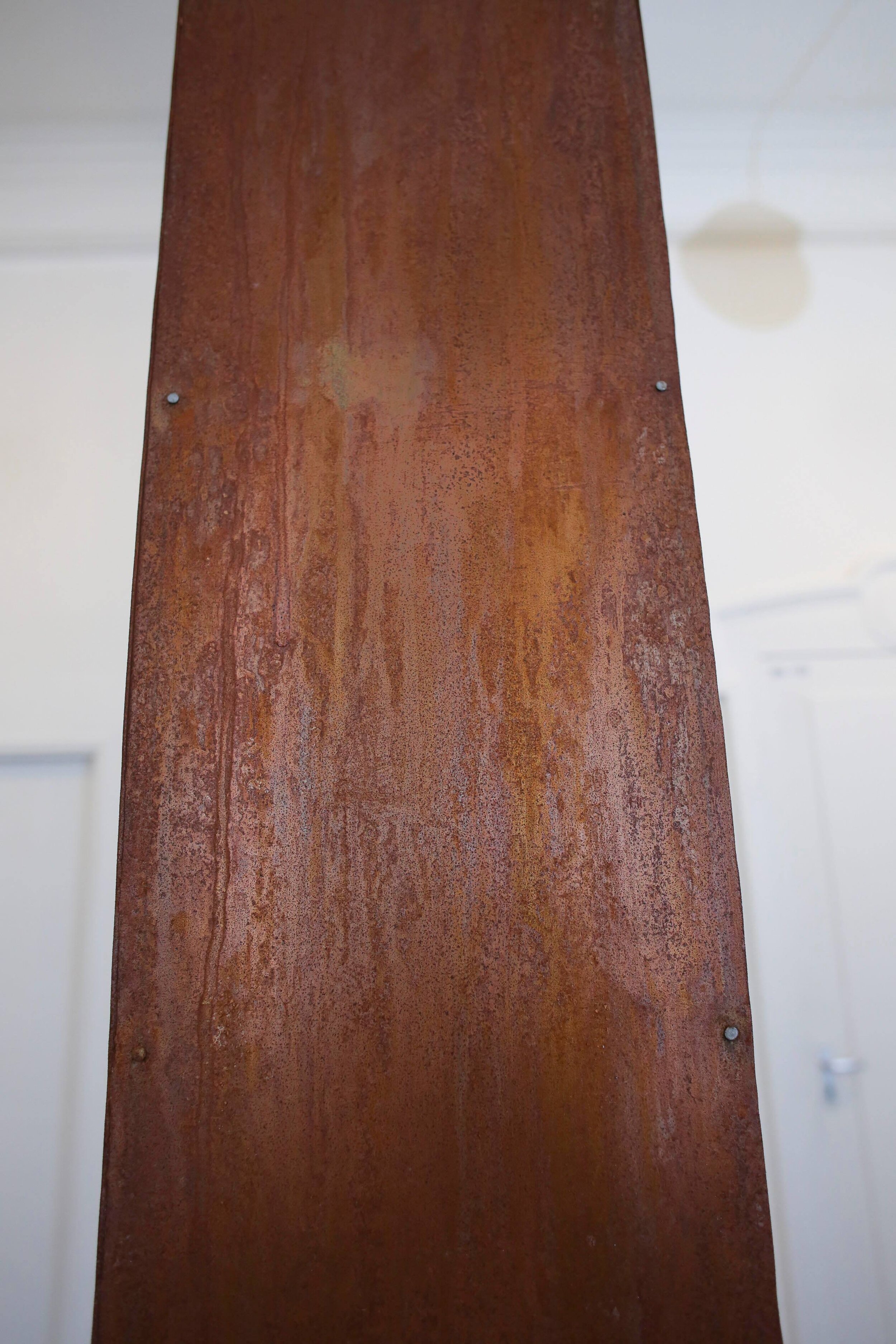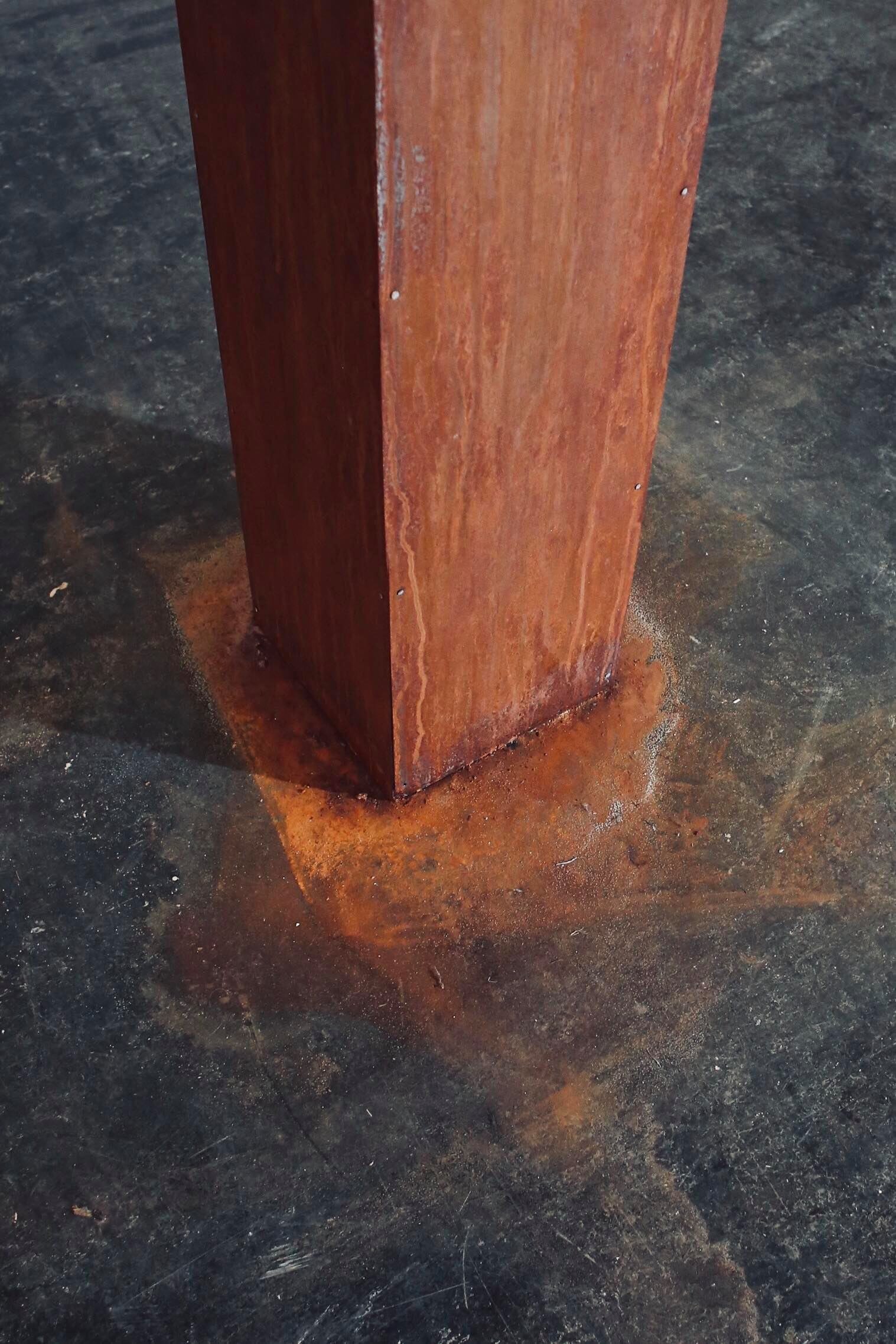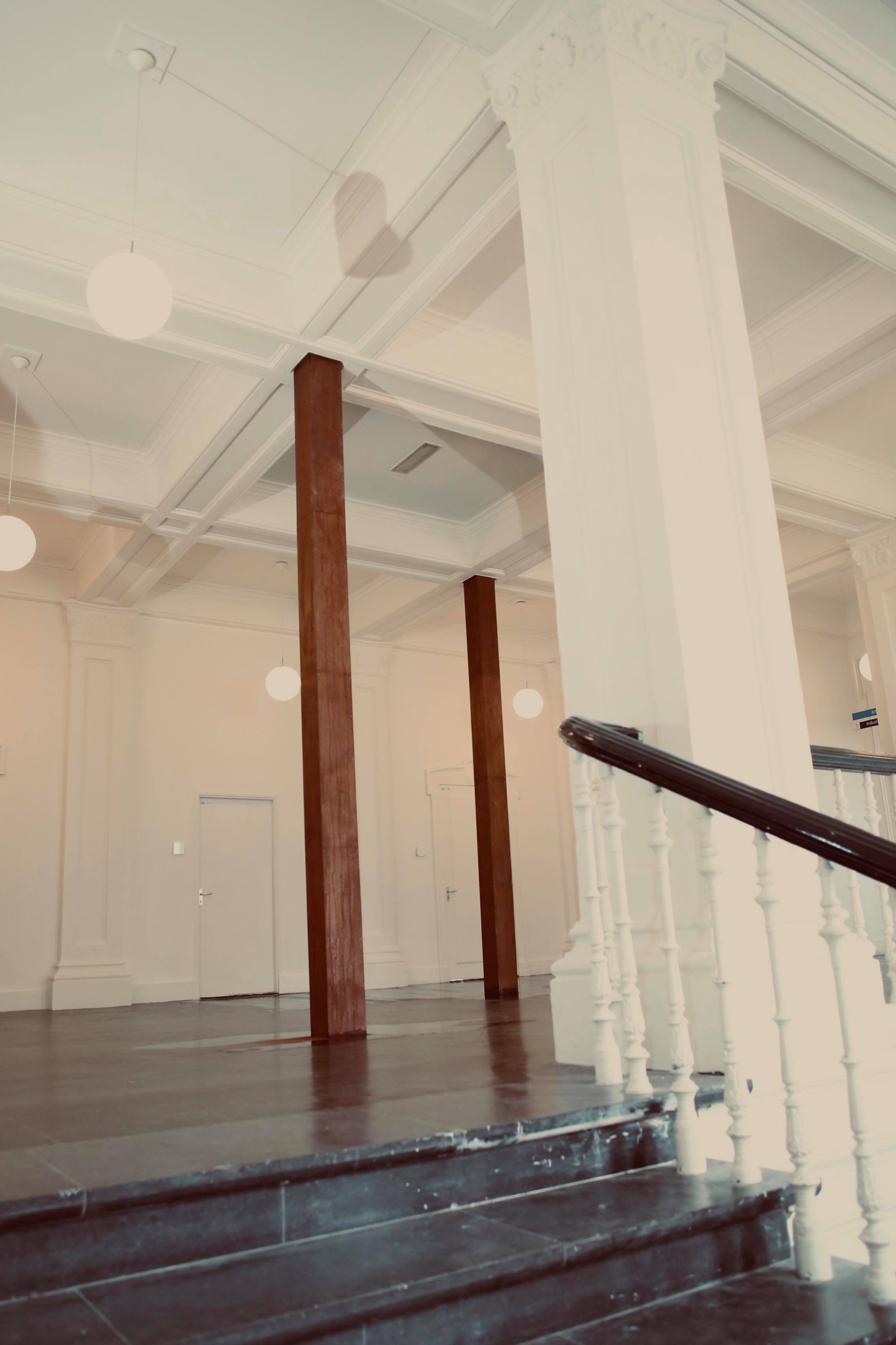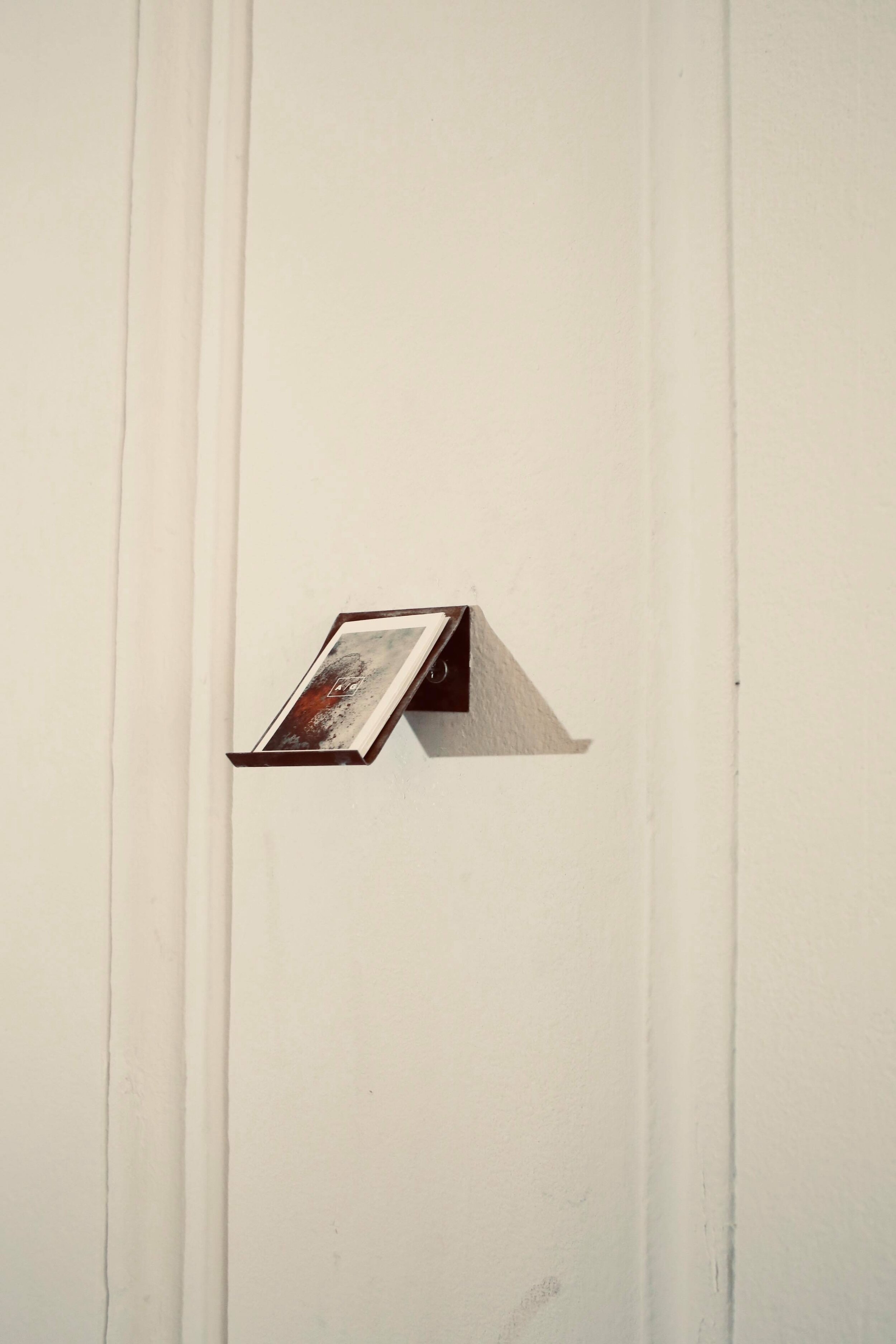P R E S E N C E
Presence, Royal Academy of Arts, the Hague, Netherlands, 2019.
About the work
How is a space perceived, occupied, and reimagined. How do we navigate a room, and how does an intervention disrupt our habitual understanding of it? The pillars of Presence command attention yet remain in harmony with the existing structure, emphasizing how an artist’s intervention can shift the experience of an environment without negating its original character. The installation, through its sheer scale and materiality, becomes a silent force that both respects and challenges the built space.
The work titled Presence was exhibited at the 2019 graduation festival of the Royal Academy of Arts. This site-specific installation consists of two rusted pillars, each measuring five meters in length, positioned diagonally in relation to one another. Their presence is both physical and reflective—mirroring each other as well as the surrounding space. Designed to fit seamlessly within the architecture, the pillars establish a dialogue with the environment, integrating into the structure while asserting their own dominance. As the viewer enters the space, they are confronted with the imposing presence of these two identities. The space itself becomes an essential part of the work—not only through the way the pillars connect with the ceiling but also through the stark whiteness that envelops them. The pure white environment was a deliberate choice, allowing the rusted surfaces to stand out, while the vibrating red tones of oxidation subtly diffuse into the surroundings.
A sequence of actions unfolds over time—both in the making of the work and in its evolving state. Viewers are invited to touch the pillars, engaging with their materiality. As the rust continues to develop, it leaves behind circular imprints on the floor, marking the passage of time and reinforcing the relationship between object and space.
The Role of Space
At its core, Presence is not just an independent sculptural entity but an intervention into the space itself—an extension and redefinition of the architectural environment. Site-specific works challenge the traditional notion of art as an isolated object by embedding meaning within a particular place. The work does not merely exist within the space; it alters, absorbs, and transforms it. The dialogue between the artwork and the site creates an interdependent relationship where neither can exist in the same way without the other.
This interaction raises questions about how space is perceived, occupied, and reimagined. How do we navigate a room, and how does an intervention disrupt our habitual understanding of it? The pillars of Presence command attention yet remain in harmony with the existing structure, emphasizing how an artist’s intervention can shift the experience of an environment without negating its original character. The installation, through its sheer scale and materiality, becomes a silent force that both respects and challenges the built space.
Intervention and Transformation
Artistic interventions into a space—whether through subtle gestures or monumental disruptions—are a way of exploring the social, historical, and architectural dimensions of place. By inserting an object that is both foreign and deeply embedded within its setting, Presence invites viewers to reflect on their own relationship with space. The rusting process, slowly imprinting itself onto the floor, serves as a metaphor for the traces we leave behind in our interactions with environments—whether physical, emotional, or historical.
In this way, Presence becomes more than just a sculptural installation; it is an evolving conversation between form and context, movement and stillness, permanence and impermanence. The viewer, by engaging with the work, becomes an active participant in this transformation. Time itself takes on a presence, observing and shaping this relationship—a continuous cycle of transformation, reflection, and the re-emergence of identities.
Through site-specificity, the work challenges the conventional boundaries of sculpture, questioning whether an artwork is ever truly independent of the space it inhabits. It asserts that space is not a passive container for art but an active participant in the creative process, shaping and being shaped by the intervention it hosts.



